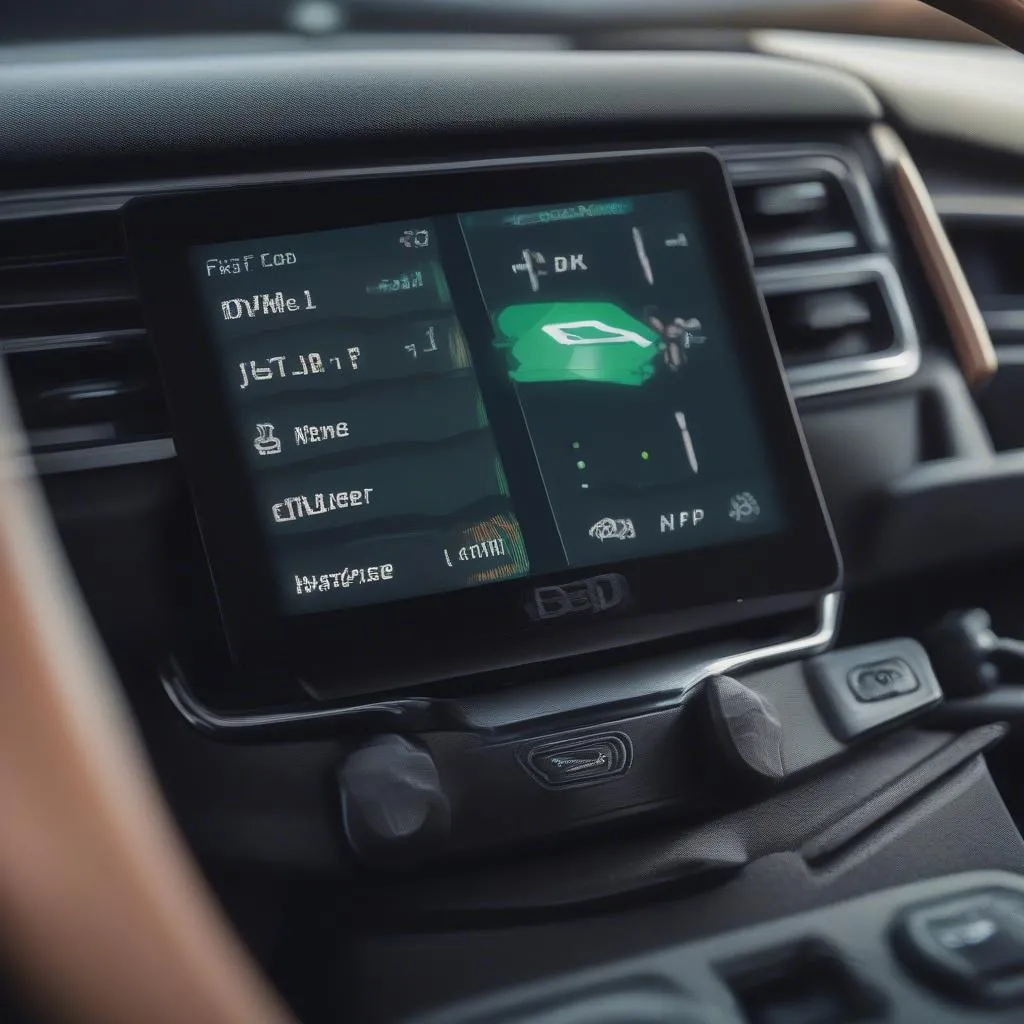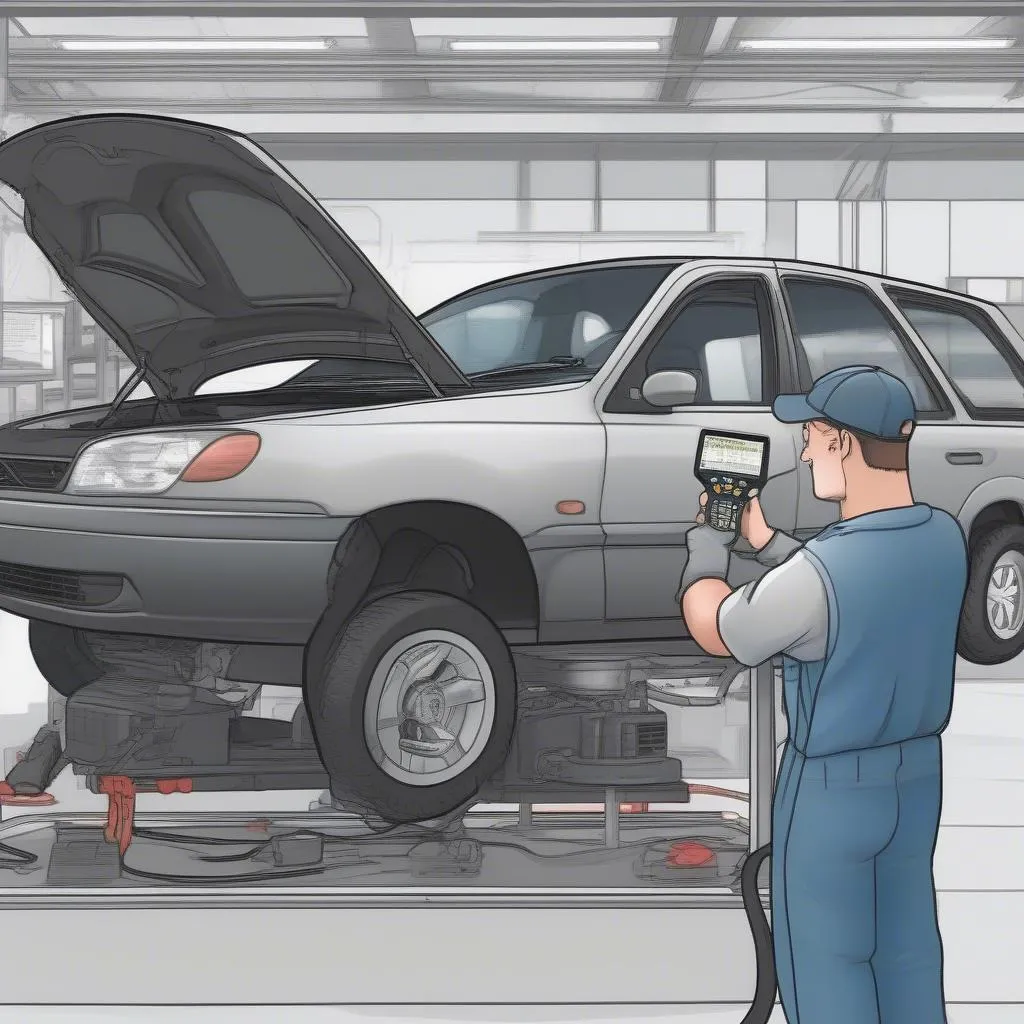Have you ever wondered if you could unlock the secrets of your car’s history just by plugging into its OBD-II port? Imagine you’re considering buying a used car in Los Angeles, California. You’ve heard whispers about unscrupulous sellers tampering with odometers to hide a car’s true mileage. Could an OBD-II scanner be your secret weapon to reveal the truth?
Let’s dive into the world of OBD-II and explore whether it holds the key to your mileage mysteries.
What Does “Does Obd-ii Tell Mileage” Even Mean?
Before we answer the million-dollar question, let’s break it down.
For the Everyday Driver: You’re probably familiar with that little port under your dashboard where mechanics plug in their scanners. That’s the OBD-II port, and it’s like a window into your car’s computer system. You might be wondering if this “window” can reveal your car’s mileage history.
From a Mechanic’s Perspective: Mechanics use OBD-II scanners like the Autel MaxiCOM MK908S to diagnose engine problems, read error codes, and access live data streams from various sensors, including those related to speed and distance.
Thinking About the Economics: The ability to easily verify mileage could impact the used car market, potentially reducing fraud and ensuring fairer prices for buyers and sellers alike.
So, Does OBD-II Actually Reveal Mileage?
Here’s the short answer: It depends.
While OBD-II scanners can access a wealth of data, they don’t always display the vehicle’s mileage directly. The presence of mileage data depends on the car’s make, model, year, and even the specific OBD-II scanner being used.
Here’s why:
- No Universal Standard: Unlike engine codes, which are standardized, there’s no universal requirement for car manufacturers to store or transmit mileage data through the OBD-II port.
- Data Storage Varies: Some vehicles may store mileage information within their engine control unit (ECU), while others might store it in other modules like the instrument cluster.
- Scanner Capabilities Matter: Not all OBD-II scanners are created equal. Some basic scanners may only read engine codes, while advanced professional-grade scanners, like those used by dealerships, may be able to access mileage data if the vehicle supports it.
Decoding the Mileage Mystery: When OBD-II Can Help
While not foolproof, OBD-II can still provide valuable clues about a vehicle’s mileage:
- Freeze Frame Data: When the “Check Engine” light illuminates, the OBD-II system stores a snapshot of various parameters at the time of the fault, including mileage. This data can be helpful in some situations, especially if multiple freeze frame records over time show a consistent mileage progression.
- Module Scanning: Advanced scanners can communicate with multiple modules in the car beyond the ECU. If the mileage data is stored in another module, such as the body control module, a skilled technician might be able to access it.
- Manufacturer-Specific Tools: Dealerships often have specialized diagnostic tools tailored to their brand of vehicles. These tools can often access more in-depth data, including mileage, that might not be available through generic OBD-II scanners.
What to Do When You Need to Verify Mileage
If you’re concerned about a vehicle’s mileage, don’t solely rely on an OBD-II scan. Consider these additional steps:
- Vehicle History Reports: Services like Carfax or AutoCheck compile data from various sources, including state DMVs, to provide a vehicle’s reported mileage history.
- Mechanical Inspection: A trusted mechanic can look for signs of wear and tear that may be inconsistent with the odometer reading.
- Service Records: Review the car’s maintenance history for mileage readings at different service intervals.
Unmasking the Truth: Common Questions about OBD-II and Mileage
Q: Can I use any OBD-II scanner to find mileage?
A: Unfortunately, no. While some advanced scanners can access mileage on certain vehicles, it’s not a guaranteed feature.
Q: Is it illegal to alter a car’s mileage?
A: Absolutely. Odometer tampering is illegal in the United States and many other countries.
Q: How can I protect myself from odometer fraud?
A: Always obtain a vehicle history report, have a trusted mechanic inspect the car, and buy from reputable sellers.
 OBD-II Port
OBD-II Port
Beyond Mileage: Exploring the Power of OBD-II
While the mileage question remains complex, remember that OBD-II is a powerful tool for car owners. You can use it to:
- Diagnose Check Engine Lights: Identify the root cause of engine problems and potentially save on expensive mechanic visits.
- Monitor Fuel Efficiency: Track your fuel economy and driving habits to improve your gas mileage.
- Customize Your Driving Experience: Some vehicles allow you to adjust settings like automatic door locking or adjust shift points using an OBD-II scanner.
For more insights on how to use OBD-II to improve your driving experience, check out our articles on Gas Mileage Using OBD and Check Engine Light OBD-II.
 Mechanic Using OBD-II Scanner
Mechanic Using OBD-II Scanner
Need Expert Help with Your Car’s Diagnostics?
We’re here to help! If you need assistance with OBD-II diagnostics or have questions about your vehicle’s systems, don’t hesitate to contact our team of automotive experts on Whatsapp: +84767531508.
Remember, knowledge is power when it comes to your car. By understanding the capabilities and limitations of OBD-II, you can make more informed decisions about your vehicle’s maintenance and potential purchases.